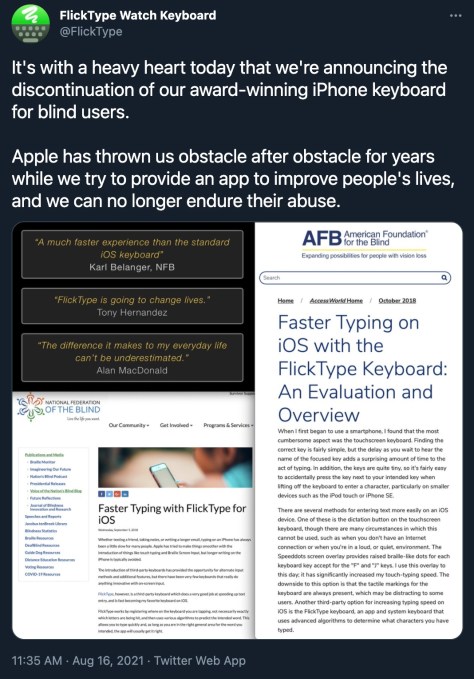Invoxia’s LongFi Tracker can report the location of your car, backpack, or teenager by pinging community-operated Helium wireless devices.
Category: Tech news
hacking,system security,protection against hackers,tech-news,gadgets,gaming
38M Records Exposed Online—Including Contact-Tracing Info
Misconfigured Power Apps from Microsoft led to more than a thousand web apps accessible to anyone who found them.
These Are the Best Dyson Vacuums You Can Buy
It’s easy to get sucked into the brand’s vast catalog. Here are the ones that floored us.
Can This Sun-Reflecting Fabric Help Fight Climate Change?
An experimental textile called metafabric is designed to cool down the wearer and reduce the need for air-conditioning.
Are These the Hidden Deepfakes in the Anthony Bourdain Movie?
Pindrop, which makes software to identify synthetic audio, found three clips totaling 50 seconds in the nearly 2-hour movie.
How to Prepare for a Disaster, Emotionally and Mentally
To start, forgive yourself and help each other.
AI Can Write in English. Now It’s Learning Other Languages
Startups in Germany, China, Israel, and elsewhere are following the path blazed by GPT-3—with local twists.
Data Brokers Know Where You Are—and Want to Sell That Intel
These firms could track whether you’ve visited your therapist’s office or your ex’s house. And without regulation, they’re a threat to democracy.
20 Amazingly Addictive Couch Co-Op Games
Settle in for some bonding time: These are some of the best cooperative titles for two to four players, all playable on a single TV.
Get your pitch-off on with our Disrupt Startup Alley companies on upcoming episodes of Extra Crunch Live
Disrupt is right around the corner, and this year the show is packed to the brim with incredible panels and conversations, an absolutely stacked Startup Battlefield cohort of companies launching on our stage, investor insights and a virtual expo hall full of exciting new products and services in the Startup Alley.
We can’t wait! Literally. So we’re giving you guys a sneak peek at some of the startups you might see at Disrupt in upcoming episodes of Extra Crunch Live.
Usually, the Extra Crunch Live crew sits down with founders and the investors who finance them to learn how they decided to partner with one another and, ultimately, how startups can get to “yes” when fundraising. In the latter half of the episode, those same guests give live feedback to folks in the audience who come on our virtual stage and pitch their products.
Truth be told, everyone loves a good pitch-off. So in these upcoming Startup Alley Edition episodes of Extra Crunch Live, we’re turning the entire episode into a pitch-off. SUA companies will come on stage, one at a time, and have exactly 60 seconds to get us excited about their startup. But it wouldn’t be a true pitch-off without some expert feedback.
I’m excited to announce the investors joining us on these episodes to share their insights and wisdom with both the startups and the audience.

Image Credits: Elena Zhukova / Scale Venture Partners
Sequeira was managing director at General Catalyst before venturing out to start Defy. Before GC, he was at TimeWarner Investments and was a founding member of AOLTW Ventures. Defy has a portfolio that includes Dropcam, Nest, Bustle and more. Sequeira has served on more than 40 company boards, so it should go without saying that he’ll have plenty of insightful feedback for our founders.
Bishop brings more than 20 years of investment experience to our little pitch-off. She currently serves on the boards of Abstract, Airspace, Demandbase, Extole, Lever and more. Bishop has also served on several boards where the company has seen a successful exit, including HubSpot, Bizible and Vitrue. Bishop specializes in business applications and will have lots to share with our pitch-off startups. Register here for Extra Crunch Live with defy.vc and Scale Venture Partners.

Image Credits: Next47 / Amanda Aude
Ananth serves as founding CEO at Next47, which is backed by Siemens AG. He’s sat on several boards where he has helped the companies grow beyond $1 billion valuations. Ananth specializes in emerging areas of deep tech, including AI/ML, vertical SaaS, robotics, mobility, etc. Some of Ananth’s current investments include Verkada, rideOS and Markforged.
Katie Stanton has been an executive and an operator for much of her career, holding roles at Twitter, Google, Yahoo and Color across a wide variety of departments, including marketing, comms, recruiting, product and media. Stanton also served in the Obama White House and State Department after getting her career started as a banker at JP Morgan. She currently sits on the board of Vivendi and has invested in dozens of early-stage companies, including Airtable, Cameo, Carta, Coinbase, Literati, Modern Fertility, Shape Security and Threads. Register here for Extra Crunch Live with Next47 and Moxxie Ventures.
You don’t want to miss these episodes of Extra Crunch Live. Register (for free) to come hang out with us!
Samsung’s refined Galaxy Fold
Samsung wasn’t quite ready to declare the Galaxy Note dead. Not just yet. When we put the question to the company again after this month’s Unpacked event, a rep told us:
Samsung is constantly evaluating its product lineup to ensure we meet the needs of consumers, while introducing technology that enhances users’ mobile experiences. We will not be launching new Galaxy Note devices in 2021. Instead, Samsung plans to continue to expand the Note experience and bring many of its popular productivity and creativity features, including the S Pen, across our Galaxy ecosystem with products like the Galaxy S21 Ultra and including to other categories like tablets and laptops. We will share more details on our future portfolio once we’re ready to announce.
It’s not an answer, exactly, so much as a reiteration of its earlier announcement that there will be no new Note for 2021. Asked whether it was simply a matter of chip shortages, Samsung sent us a similarly non-committal response:
The current volatility of the semiconductor market is being felt across the entire technology industry and beyond. At Samsung, we are making our best efforts to mitigate the impact, and will continue to work diligently with our partners to overcome supply challenges.

Image Credits: Brian Heater
It’s too early to declare the Galaxy Fold 3 the heir to the Note’s decade-long phablet throne. What is for certain, however, is that new features introduced for the Galaxy S line and the company’s high-end foldable have rendered the device fairly redundant. What seems most likely, meanwhile, is Samsung’s wait and see approach. A good selling Fold 3 is as compelling an argument for the Note’s redundancy as any. But that continues to be a big “if.”
Samsung was smart to position early Folds as exciting experiments. It’s never easy to be among the first to market with a new technology, especially with the sorts of scales Samsung tends to trade in. The original Fold brought with it some major questions, both in terms of reliability and adoption. Without retreading the former too much here (we’ve written plenty about it), let’s just say the company went back to the drawing board a couple of times with that first round.
As for the latter, the company revealed back in 2019 that it sold one million units that first year. It was a surprising — and impressive — figure. Obviously it can’t hold a candle to the sorts of numbers the company puts up with the S and Note Series, but for an unproven $2,000 device a few months after launch, it was certainly a positive sign that — at the very least — early adopters were along for the ride.
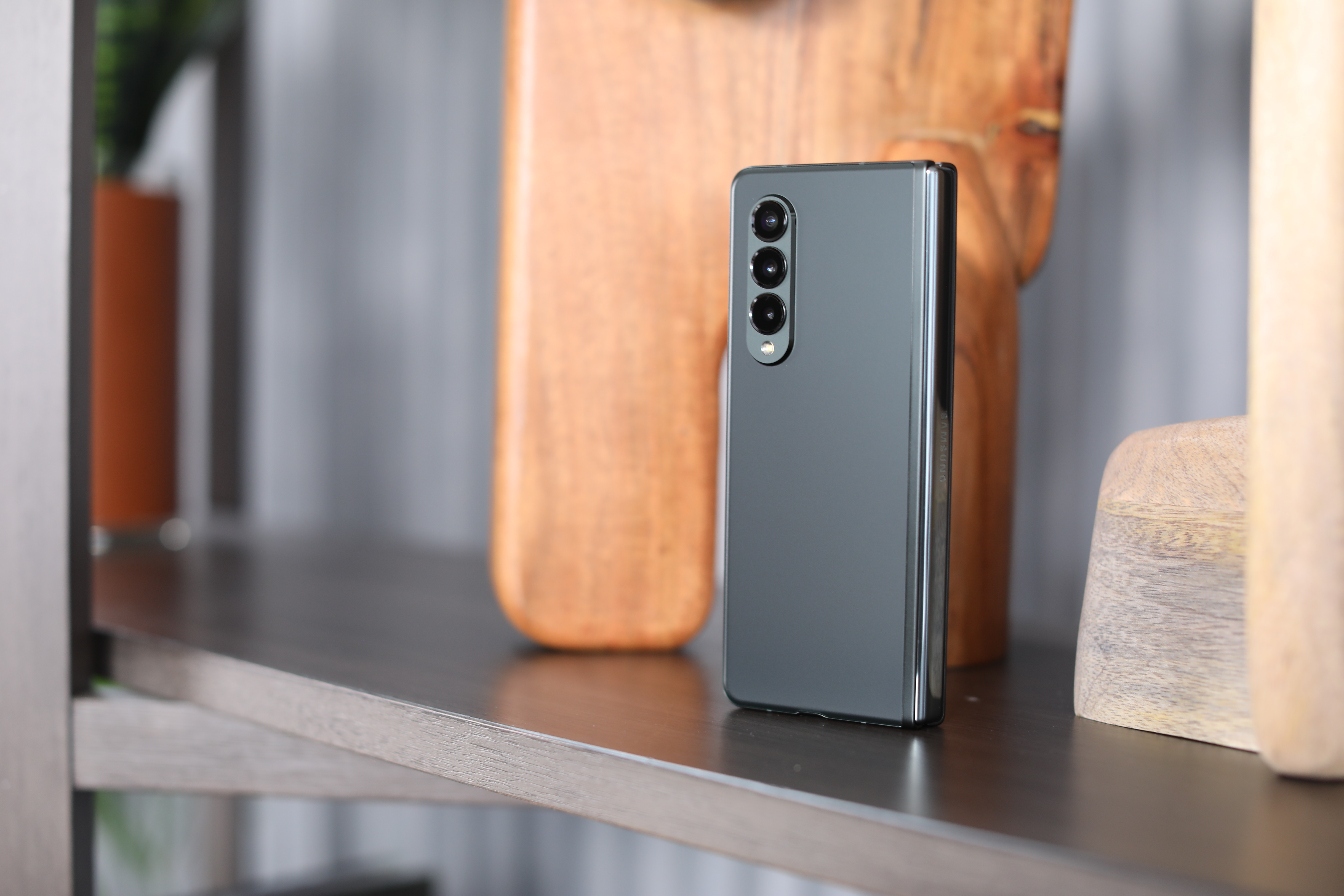
Image Credits: Brian Heater
The Fold 2 found the company more directly addressing some of the biggest issues that arrived with its predecessor, making for a more robust and well-rounded device. The Fold 3 isn’t a radical departure by any stretch, but there are some key updates and refinements on board here. Top-level, here’s what’s new:
- S-Pen support
- IPX8 water resistance
- Slightly larger external display
- Under-display camera
- Strengthened interior screen protector, frame and front glass
So what, precisely, does all of that add up to? For Samsung, the answer is simple: a new flagship. It’s one of those words in the mobile world with a bit of a floating definition. Samsung, after all, previously had two flagships, in the form of the S and Note series. Whether this a tech passing moment for the Note or a declaration of a third flagship for the Galaxy line is dependent on the words written above. What it does signal, however, is Samsung’s stated confidence that this is the moment its high-end foldable goes mainstream.
The first step toward mainstreaming the product is a no brainer. Price. The Fold 3 is still not, by any stretch of the imagination, an affordable device. At $1,800, it’s fittingly still the price of two flagship phones put together. But a $200 drop from its predecessor marks a considerable step in the right direction. One imagines/hopes things will continue to go down as Samsung is able to scale the tech further. Those seeking an “affordable” foldable should be taking a closer look at the new Flip, which actually ducks below the $1,000 price point. More on that in a later review.
There are bound to be issues with any new form factor — even one from a company with Samsung’s know how. I have this visceral memory of walking around gingerly with the original Fold for fear of breaking the thing. There’s a certain expectation of usage during the review process — that you’ll effectively treat the device as you would your own, but the earliest Fold didn’t afford that opportunity, leaving me a bit tense throughout that I might inadvertently damage the $2,000 phone.
And, well, I did. And I certainly wasn’t the first. There were enough issues to warrant reinforcing the device before sending it out into the broader world. It was the right move, to be sure. I don’t think anyone was expecting the Fold would be indestructible, but, again, there’s that expectation of standard usage that the earliest unit didn’t live up to.
The primary fix was two-fold: extending the protective film to the edges after the first looked far too similar to the removable screen protectors Samsung (and other) phones ship with, and second, the company added a brush mechanism to the interior of the hinge mechanism that would still allow some debris in, but would sweep it away through the process of opening the product. That would remove it before it had an opportunity to damage the screen.
The second generation upgraded to a more durable foldable glass. The new version extends those protections further. It is, notably, the first version of the Fold that doesn’t greet you with a laundry list of restrictions the moment you open the box. That’s a good sign. As a rule, I’d say users should probably adhere to a similar “normal usage.” And probably invest in one of those cases. It’s an $1,800 phone, after all.

Image Credits: Brian Heater
The most notable addition on the durability front is the IPX8 rating. That’s water resistance for up to 1.5 meters for as long as 30 minutes. The company’s foldables line was a little slow on the uptake in terms of the sort of waterproofing/water resistance that has become nearly standard for premium phones — and understandably so, given the complex mechanisms required. The “X” in the rating, however, indicates that there’s no dustproofing here, for the simple reason that the hinge is actually designed to let particles in (as noted above).
The front and back of the device are now covered with Gorilla Glass Victus — Corning’s latest. Per Corning, “In our lab tests, Gorilla Glass Victus survived drops onto hard, rough surfaces from up to 2 meters. Competitive aluminosilicate glasses, from other manufacturers, typically fail when dropped from 0.8 meters. Additionally, the scratch resistance of Gorilla Glass Victus is up to 4x better than competitive aluminosilicate.” The phone’s body and hinge, meanwhile, are built out of alloy Samsung calls “Armor aluminum, which it claims is “the strongest aluminum used in modern smartphones.”
Perhaps most important of all is the inclusion of a stronger reinforced screen protector that extends further to the sides, making it a lot more difficult and less tempting to try to peel it off. The added protection is necessary both for standard usage (you really don’t want a phone that’s going to get damaged from too much tapping) and opens it up for S Pen functionality. The company now has three lines that utilize its stylus and all of the productivity features contained therein.

Image Credits: Brian Heater
In addition to the S Pen Pro, the company introduced a Fold-specific model. The $50 stylus is smaller and features a retractable tip, specifically designed to lessen the pressure on the screen. I played around with both styli and didn’t notice a dramatic difference between the two, and while Samsung doesn’t explicitly warn against using the Pro, I’d go for the Fold Edition out of an abundance of caution. (The system also issues a warning if you attempt to use an older version of the S-Pen.)
The company offered TechCrunch the following statement on stylus compatibility:
Only the latest S Pen Fold Edition and S Pen Pro are compatible as they are set to a different frequency than standard S Pens. However, S Pen Pro is compatible with other S Pen-enabled devices—such as Samsung Galaxy tablets, Chromebooks, and smartphones. Users can switch the frequency of the S Pen Pro using the switch at the top.
The 7.6-inch canvas lends itself well to S-Pen functionality. Of course, the Fold — like other foldables — still has a visible crease in the center. That takes some getting used to, compared to the Note. But if you’re a stylus devotee, the functionality fits in well with a growing suite of productivity tools like multiple active windows and app split view. Samsung has compiled quite a productivity workhouse here.
Of course, unlike the Note (and like the S line), the Fold doesn’t feature a built-in slot for the S Pen. It seems likely there may have been some structural integrity issues barring its inclusion — or, at the very least, it probably would have added even more thickness to what is already a fairly thin device when folded up. Samsung does offer up an S Pen case for those serious about taking their stylus with them — and are otherwise worried about losing it.
The primary display hasn’t changed much since last year. It’s still 7.6 inches with a 120Hz refresh rate and a 2208 x 1768 resolution, with support for HDR10+. The 6.2-inch front screen doesn’t have the high dynamic range format, though it has been bumped up to 120Hz from 60Hz. The Fold 2 upgraded the exterior screen size last year, and it makes a big difference. There are plenty of times you just don’t want to deal with unfolding the thing. The aspect ratio is still much to skinny to rely on it most of the time, but App Continuity is a nice feature that lets you seamlessly jump between screens on enabled apps.

Image Credits: Brian Heater
The biggest addition on the screen front is more of a subtraction, really. The pinhole camera is gone from the main screen. In its place is an under-display camera — the first on a Samsung device. The technology has been a longstanding holy grail for companies. Samsung’s not the first to offer the feature — companies like Oppo and ZTE have sported the feature for a little while now. The Fold uses similar technology, applying a thin layer of pixels above the hole punch. The spot is still visible, particularly when there’s a white image on the screen, but at first blush, it does offer something more contiguous.

Image Credits: Brian Heater
If you follow the space at all, you know that the image performance of these cameras have been less than ideal thus far. And Samsung suffers the same fate. The above shots were taken on the front 10-megapixel and under-display four-megapixels cameras respectively. There’s a haze or blur on the under-screen camera — really not up to the standards we expect from a premium smartphone in 2021.
In an earlier conversation with Samsung, the company was pretty candid about this — and the reason the Fold is the first of its phones to sport the tech. It’s here because you’ve got the additional option of the front-facing camera for selfies, so you’re not reliant on a, frankly, subpar camera. Certainly I wouldn’t rely on it for shooting photos — which is already admittedly awkward with the large form factor. I suppose it can work for teleconferencing in a pinch, but even then, you’re probably better off with the front one. File it as something Samsung can improve on in future updates, as the underlying tech improves.

Image Credits: Brian Heater
The main camera system, meanwhile, is largely unchanged since the last version at:
- 12MP Ultra Wide. F2.2, Pixel size: 1.12?m, FOV: 123-degree
- 12MP Wide-angle. Dual Pixel AF, OIS, F1.8, Pixel size: 1.8?m, FOV: 83-degree
- 12MP Telephoto. PDAF, F2.4, OIS, Pixel size: 1.0?m, FOV: 45-degree
It’s a great camera setup that shoots excellent photos, with the added bonus of being able to switch between a 7.6 and 6.2 inch viewfinder (honestly, again, the full screen is kind of awkward for shooting in most scenarios, so I largely stuck with the smaller one).
The battery meanwhile, takes a small hit, down from 4,500mAh to 4,400mAh, split between two modules behind the display halves. It’s a step in the wrong direction, if only a small one. A big device like this tends to be power hungry. Depending on your usage, you should be able to get through a day. That’s not going to be huge problem so long as many of us are still largely stuck at home, but probably not something you’re going to sit around and binge videos on all day without plugging it in.
Naturally, the Fold sports the latest Snapdragon — the 888. That’s coupled with 12GB of RAM and 256GB of storage on the model Samsung sent us. Doubling the storage will bring the price tag up to $1,900.

Image Credits: Brian Heater
It’s been impressive to watch Samsung take the Fold from troubled early adopter tech to something far more stable in the course of two generations. But while the company is ready to toss around words like mainstream in the context of its foldables, it’s hard to shake the feeling that such goals are still a long ways away.
The price is heading in the right direction, but the product is still prohibitively expensive for most. I certainly can’t answer the question of why you need such a product, though the advantages of a larger screen make themselves known pretty quickly. In many instances, the form factor is still a bit cumbersome.
If the Galaxy Note is suddenly redundant, the fault lays more with the Galaxy S series than the Fold. And if Samsung is looking for a truly mainstream foldable experience, it may want to take a longer look at the Galaxy Z Flip. In terms of size, price, flexibility and good looks, that’s looking like the one to beat. Review coming soon.
‘How to hire’ is the new ‘how to conserve runway’
Thanks for reading Startups Weekly. Want the weekly digest in your inbox every Saturday? Sign up here.
When COVID-19 first began to infect the world, my interviews with venture capitalists all somewhat fit into the same mold. Investors would tell me that they’re “triaging” their own portfolio to understand how to help startups rocked by the pandemic. While no one outright said that they would stop investing in new opportunities, many spoke on turning inward, instead of outward, to navigate the uncertain time.
Then the conversation would inevitably turn toward runway, aka the amount of capital that would dictate how many months they could stay in business before shutting down. Every founder was thinking about it, every VC was advising their portfolio companies to be smart about spending, and one startup even launched a product to help founders secure money in preparation for a broader pullback from traditional investors. For what it’s worth, that startup, ClearCo, is now a unicorn.
Fast-forward to over a year later and it’s been months since I’ve heard the word runway. The phrase has all but disappeared as venture capital as an asset class exploded with new check-writers and record-breaking fund closes. As companies raise follow-on financing weeks, instead of years, after prior rounds, I wondered what the new tension was in startupland.
In a conversation this week, NEA partner Ann Bordetsky put it simply: “It’s easy to raise and hard to hire.”
Bordetsky, who joined NEA this year, said that the next six months of advice for founders will be all about hiring. “Figure out your unfair advantage for hiring the best talent,” she said. “Not everyone can hire the best of the best, so hiring is going to make or break a lot of companies.” Put differently, “how to hire” is the new “how to conserve runway.”
Hiring has always been hard for startups, which are more strapped for resources than, say, a Facebook that can offer an engineer a $1 million signing bonus without blinking an eye. Still, founders tell me that hiring is only getting harder as more and more well-capitalized startups are rising up with impressive valuations.
We’ve been covering it for years, but expect the conversation to grow only louder. We are in the Great Resignation, after all.
- How and when to hire your first product manager
- How to hire your first engineer: A guide for nontechnical founders
- How to hire and structure a growth team
- 4 common mistakes startups make when setting pay for hybrid workers
- Greylock’s Mike Duboe explains how to define growth and build your team
- More companies should shift to a work-from-home model
- Work From Home is dead, long live Work From Anywhere
In the rest of this newsletter, we’ll discuss the growth and resiliency of Nuro, OnlyFans’ bombshell news and the first women’s health unicorn. As always, you can support me by following me on Twitter @nmasc_ and sharing this newsletter with two of your friends.
The Nuro EC-1

Image Credits: Nigel Sussman
Quiet and autonomous delivery don’t necessarily find themselves in the same sentence often, unless, of course, you’re talking about Nuro. Our latest EC-1 looks under the hood of the AV startup, built by former Google self-driving project employees, as it finds its voice.
Here’s what you need to know: The 4-part series explores Nuro’s route to a $5 billion valuation, which includes Domino’s and a regulatory obstacle course. It was written by Mark Harris and edited by Kirsten Korosec.
The series:
- Part 1: Origin story “How Google’s self-driving car project accidentally spawned its robotic delivery rival” (3,200 words/13 minutes)
- Part 2: Regulations “Why regulators love Nuro’s self-driving delivery vehicles” (2,400 words/10 minutes)
- Part 3: Partnerships “How Nuro became the robotic face of Domino’s” (2,500 words/10 minutes)
- Part 4: Operations “Here’s what the inevitable friendly neighborhood robot invasion looks like” (2,500 words/10 minutes)
Will OnlyFans lose its only fans?

Image Credits: Bryce Durbin / TechCrunch
OnlyFans, a platform in which creators paywall exclusive content for their biggest fans, announced this week that it will ban explicit content. While the platform was not built exclusively for porn, the content was largely its most known use case — powering OnlyFans’ lucrative rise over the past year. Thus, the ban came as a shock as many see OnlyFans’ success inextricably tied to porn.
Here’s what you need to know: Many saw OnlyFans’ choice to step away from porn as a reaction to not being able to find outside investors, news that broke earlier in the day due to leaked financials. As pressure from the banking world allegedly forced OnlyFans to focus on more SFW content, my colleague Lucas Matney gave his two cents.
From Matney’s op-ed:
This shutdown is also the opportunity of a lifetime for the crypto industry, which could capitalize on the shutdown and a recent wave of increasingly consumer-friendly crypto payments infrastructure products to create a platform that won’t crumble under the influence of payment providers.
The real challenge is in making it simple to onboard new users to both a new platform and potentially their first crypto wallet — while staying compliant with regulatory guidelines — at a time when more conventional web payment structures have gotten so streamlined and free adult content is just as prolific as ever.
More on crypto’s current state:
- Regulating crypto is essential to ensuring its global legitimacy
- Crypto world shows signs of being rather bullish
- Twitter taps crypto developer to lead ‘bluesky’ decentralized social network effort
Wom??en’s health gets its first unicorn

Image Credits: Bryce Durbin
This week on Equity, we discussed a rarity in the world of tech: A women-led company in the women’s health space became a unicorn in a financing led by women. The historic move by Maven, founded by Kate Ryder, shows how women’s health is anything but a niche market.
Here’s what you need to know: With fresh capitalization, Maven’s comprehensive women’s health digital clinic and benefits service could now become a platform play. My take is that the company wants to quietly show people how women’s health is tied to everyone’s health. We’ll likely see the startup expand its lens of who it serves, and we’ve already seen it expand into family care.
Diving into digital health more:
- Hormonal health is a massive opportunity: Where are the unicorns?
- Should startups build or buy telehealth infrastructure?
- How to establish a health tech startup advisory board
Around TC
- UiPath CEO Daniel Dines is coming to TC Sessions: SaaS to talk RPA and automation
- Affordable student passes available for TC Sessions: SaaS 2021
- Announcing the agenda for the Disrupt Stage in September
- Don’t miss these special breakout sessions at TechCrunch Disrupt 2021
- Seth Rogen is coming to TechCrunch Disrupt to talk about the weed business
Across the week
Seen on TechCrunch
- The hottest fintech market you aren’t paying attention to
- Spotify to spend $1B buying its own stock
- Musk: The Tesla Bot is coming
- Salesforce announces first integrations with Slack after closing $28B sale
- Yik Yak returns from the dead
Seen on Extra Crunch
- Let’s make a deal: A crash course on corporate development
- A VC shares 5 things no one told you about pitching VCs
- Taking consumer subscription software to the great outdoors
- When VCs turned to Zoom, Chicago startups were ready for their close-up
- What does Brazil’s new receivables regulation mean for fintechs?
Same time, same place, next week? Okay cool.
This Week in Apps: OnlyFans bans sexual content, SharePlay delayed, TikTok questioned over biometric data collection
Welcome back to This Week in Apps, the weekly TechCrunch series that recaps the latest in mobile OS news, mobile applications and the overall app economy.
The app industry continues to grow, with a record 218 billion downloads and $143 billion in global consumer spend in 2020. Consumers last year also spent 3.5 trillion minutes using apps on Android devices alone. And in the U.S., app usage surged ahead of the time spent watching live TV. Currently, the average American watches 3.7 hours of live TV per day, but now spends four hours per day on their mobile devices.
Apps aren’t just a way to pass idle hours — they’re also a big business. In 2019, mobile-first companies had a combined $544 billion valuation, 6.5x higher than those without a mobile focus. In 2020, investors poured $73 billion in capital into mobile companies — a figure that’s up 27% year-over-year.
This Week in Apps offers a way to keep up with this fast-moving industry in one place with the latest from the world of apps, including news, updates, startup fundings, mergers and acquisitions, and suggestions about new apps and games to try, too.
Do you want This Week in Apps in your inbox every Saturday? Sign up here: techcrunch.com/newsletters
Top Stories
OnlyFans to ban sexually explicit content
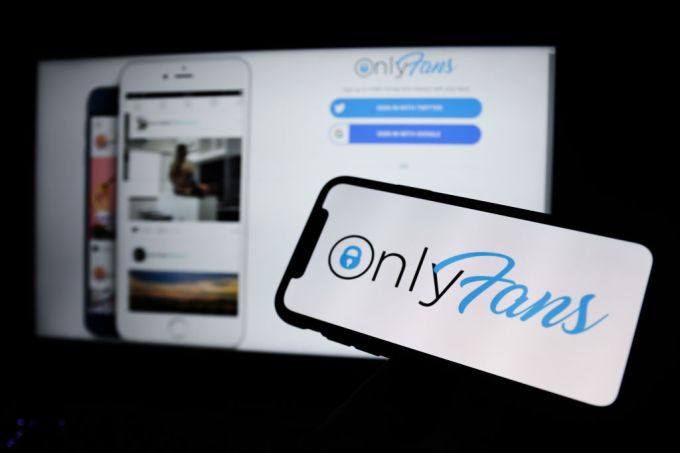
(Photo Illustration by Jakub Porzycki/NurPhoto via Getty Images)
Creator platform OnlyFans is getting out of the porn business. The company announced this week it will begin to prohibit any “sexually explicit” content starting on October 1, 2021 — a decision it claimed would ensure the long-term sustainability of the platform. The news angered a number of impacted creators who weren’t notified ahead of time and who’ve come to rely on OnlyFans as their main source of income.
However, word is that OnlyFans was struggling to find outside investors, despite its sizable user base, due to the adult content it hosts. Some VC firms are prohibited from investing in adult content businesses, while others may be concerned over other matters — like how NSFW content could have limited interest from advertisers and brand partners. They may have also worried about OnlyFans’ ability to successfully restrict minors from using the app, in light of what appears to be soon-to-come increased regulations for online businesses. Plus, porn companies face a number of other issues, too. They have to continually ensure they’re not hosting illegal content like child sex abuse material, revenge porn or content from sex trafficking victims — the latter which has led to lawsuits at other large porn companies.
The news followed a big marketing push for OnlyFans’ porn-free (SFW) app, OFTV, which circulated alongside reports that the company was looking to raise funds at a $1 billion+ valuation. OnlyFans may not have technically needed the funding to operate its current business — it handled more than $2 billion in sales in 2020 and keeps 20%. Rather, the company may have seen there’s more opportunity to cater to the “SFW” creator community, now that it has big names like Bella Thorne, Cardi B, Tyga, Tyler Posey, Blac Chyna, Bhad Bhabie and others on board.
U.S. lawmakers demand info on TikTok’s plans for biometric data collection
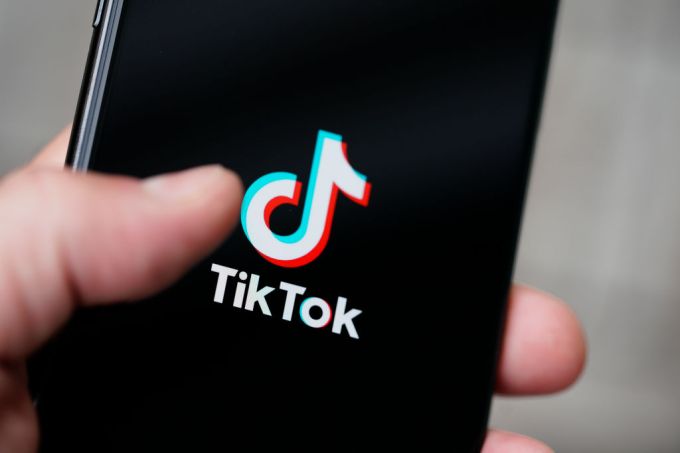
The TikTok logo is seen on an iPhone 11 Pro max. Image Credits: Nur Photo/Getty Images
U.S. lawmakers are challenging TikTok on its plans to collect biometric data from its users. TechCrunch first reported on TikTok’s updated privacy policy in June, where the company gave itself permission to collect biometric data in the U.S., including users’ “faceprints and voiceprints.” When reached for comment, TikTok could not confirm what product developments necessitated the addition of biometric data to its list of disclosures about the information it automatically collects from users, but said it would ask for consent in the case such data collection practices began.
Earlier this month, Senators Amy Klobuchar (D-MN) and John Thune (R-SD) sent a letter to TikTok CEO Shou Zi Chew, which said they were “alarmed” by the change, and demanded to know what information TikTok will be collecting and what it plans to do with the data. This wouldn’t be the first time TikTok got in trouble for excessive data collection. Earlier this year, the company paid out $92 million to settle a class-action lawsuit that claimed TikTok had unlawfully collected users’ biometric data and shared it with third parties.
Weekly News
Platforms: Apple
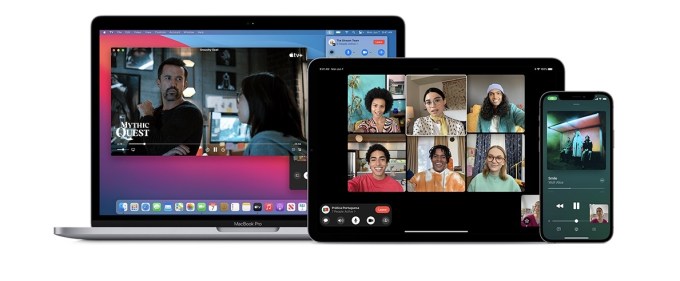
Image Credits: Apple
 Apple told developers that some of the features it announced as coming in iOS 15 won’t be available at launch. This includes one of the highlights of the new OS, SharePlay, a feature that lets people share music, videos and their screen over FaceTime calls. Other features that will come in later releases include Wallet’s support for ID cards, the App Privacy report and others that have yet to make it to beta releases.
Apple told developers that some of the features it announced as coming in iOS 15 won’t be available at launch. This includes one of the highlights of the new OS, SharePlay, a feature that lets people share music, videos and their screen over FaceTime calls. Other features that will come in later releases include Wallet’s support for ID cards, the App Privacy report and others that have yet to make it to beta releases.- Apple walked back its controversial Safari changes with the iOS 15 beta 6 update. Apple’s original redesign had shown the address bar at the bottom of the screen, floating atop the page’s content. Now the tab bar will appear below the page’s content, offering access to its usual set of buttons as when it was at the top. Users can also turn off the bottom tab bar now and revert to the old, Single Tab option that puts the address bar back at the top as before.
- In response to criticism over its new CSAM detection technology, Apple said the version of NeuralHash that was reverse-engineered by a developer, Asuhariet Ygvar, was a generic version, and not the complete version that will roll out later this year.
- The Verge dug through over 800 documents from the Apple-Epic trial to find the best emails, which included dirt on a number of other companies like Netflix, Hulu, Sony, Google, Nintendo, Valve, Microsoft, Amazon and more. These offered details on things like Netflix’s secret arrangement to pay only 15% of revenue, how Microsoft also quietly offers a way for some companies to bypass its full cut, how Apple initially saw the Amazon Appstore as a threat and more.
Platforms: Google
- A beta version of the Android Accessibility Suite app (12.0.0) which rolled out with the fourth Android beta release added something called “Camera Switches” to Switch Access, a toolset that lets you interact with your device without using the touchscreen. Camera Switches allows users to navigate their phone and use its features by making face gestures, like a smile, open mouth, raised eyebrows and more.
- Google announced its Pixel 5a with 5G, the latest A-series Pixel phone, will arrive on August 27, offering IP67 water resistance, long-lasting Adaptive Battery, Pixel’s dual-camera system and more, for $449. The phone makes Google’s default Android experience available at a lower price point than the soon to arrive Pixel 6.
- An unredacted complaint from the Apple-Epic trial revealed that Google had quietly paid developers hundreds of millions of dollars via a program known as “Project Hug,” (later “Apps and Games Velocity Program”) to keep their games on the Play Store. Epic alleges Google launched the program to keep developers from following its lead by moving their games outside the store.
Augmented Reality
- Snap on Thursday announced it hired its first VP of Platform Partnerships to lead AR, Konstantinos Papamiltiadis (“KP”). The new exec will lead Snap’s efforts to onboard partners, including individual AR creators building via Lens Studio as well as large companies that incorporate Snapchat’s camera and AR technology (Camera Kit) into their apps. KP will join in September, and report to Ben Schwerin, SVP of Content and Partnerships.
Fintech
- Crypto exchange Coinbase will enter the Japanese market through a new partnership with Japanese financial giant Mitsubishi UFJ Financial Group (MUFG). The company said it plans to launch other localized versions of its existing global services in the future.
Social
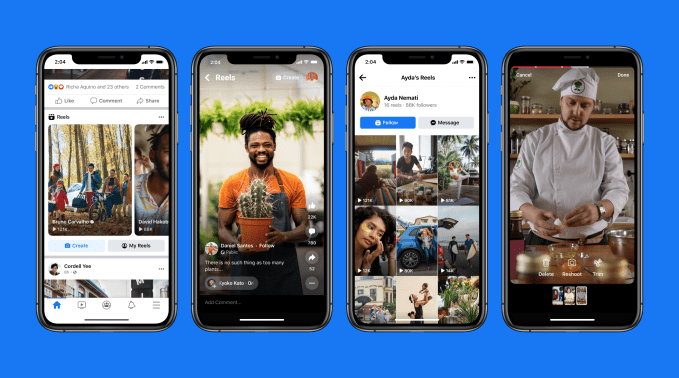
Image Credits: Facebook
- Facebook launched a “test” of Facebook Reels in the U.S. on iOS and Android. The new feature brings the Reels experience to Facebook, allowing users to create and share short-form video content directly within the News Feed or within Facebook Groups. Instagram Reels creators can also now opt in to have their Reels featured on users’ News Feed. The company is heavily investing its its battle with TikTok, even pledging that some portion of its $1 billion creator fund will go toward Facebook Reels.
- Twitter’s redesign of its website and app was met with a lot of backlash from users and accessibility experts alike. The company choices add more visual contrast between various elements and may have helped those with low vision. But for others, the contrast is causing strain and headaches. Experts believe accessibility isn’t a one-size fits all situation, and Twitter should have introduced tools that allowed people to adjust their settings to their own needs.
- Twitter also tapped crypto developer Jay Graber to head the company’s “bluesky” project, which aims to create a decentralized social media protocol on which a number of networks, including Twitter, will eventually operate. The project will operate independently from Twitter, but is funded by Twitter and run by Twitter employees. Elsewhere, Twitter rolled out a new option that would allow users to report misinformation.
- Twitter added Spaces support to its API, allowing developers to build Spaces discovery tools, and later, tools for hosts.
- YikYak returned, under new management. The once-popular anonymous social network relaunched on iOS this week under new anonymous ownership from people who clearly hope a do-over will lead to different results. The original version of the app shut down in 2017 after being plagued by cyberbullying.
- The pro-Trump Twitter alternative Gettr’s lack of moderation has allowed users to share child exploitation images, according to research from the Stanford Internet Observatory’s Cyber Policy Center.
- Pinterest rolled out a new set of more inclusive search filters that allow people to find styles for different types of hair textures — like coily, curly, wavy, straight, as well as shaved or bald and protective styles.
Photos
- Photoshop for iPad gained new image correction tools, including the Healing Brush and Magic Wand, and added support for connecting an iPad to external monitors via HDMI or USB-C. The company also launched a Photoshop Beta program on the desktop.
Messaging
- WhatsApp is being adopted by the Taliban to spread its message across Afghanistan, despite being on Facebook’s list of banned organizations. The company says it’s proactively removing Taliban content — but that may be difficult to do since WhatsApp’s E2E encryption means it can’t read people’s texts. This week, Facebook shut down a Taliban helpline in Kabul, which allowed civilians to report violence and looting, but some critics said this wasn’t actually helping local Afghans, as the group was now in effect governing the region.
- WhatsApp is also testing a new feature that will show a large preview when sharing links, which some suspect may launch around the time when the app adds the ability to have the same account running on multiple devices.
Streaming & Entertainment
- Netflix announced it’s adding spatial audio support on iPhone and iPad on iOS 14, joining other streamers like HBO Max, Disney+ and Peacock that have already pledged to support the new technology. The feature will be available to toggle on and off in the Control Center, when it arrives.
- Blockchain-powered streaming music service Audius partnered with TikTok to allow artists to upload their songs using TikTok’s new SoundKit in just one click.
- YouTube’s mobile app added new functionality that allows users to browse a video’s chapters, and jump into the chapter they want directly from the search page.
- Spotify’s Anchor app now allows users in global markets to record “Music + Talk” podcasts, where users can combine spoken word recordings with any track from Spotify’s library of 70 million songs for a radio DJ-like experience.
- Podcasters are complaining that Apple’s revamped Podcasts platform is not working well, reports The Verge. Podcasts Connect has been buggy, and sports a confusing interface that has led to serious user errors (like entire shows being archived). And listeners have complained about syncing problems and podcasts they already heard flooding their libraries.
Dating
- Tinder announced a new feature that will allow users to voluntarily verify their identity on the platform, which will allow the company to cross-reference sex offender registry data. Previously, Tinder would only check this database when a user signed up for a paid subscription with a credit card.
Gaming

Image Source: The Pokémon Company
- Pokémon Unite will come to iOS and Android on September 22, The Pokémon Company announced during a livestream this week. The strategic battle game first launched on Nintendo Switch in late July.
- Developer Konami announced a new game, Castlevania: Grimoire of Souls, which will come exclusively to Apple Arcade. The game is described as a “full-fledged side-scrolling action game,” featuring a roster of iconic characters from the classic game series. The company last year released another version of Castelvania on the App Store and Google Play.
- Dragon Ball Z: Dokkan Battle has now surpassed $3 billion in player spending since its 2015 debut, reported Sensor Tower. The game from Bandai Namco took 20 months to reach the figure after hitting the $2 billion milestone in 2019. The new landmark sees the game joining other top-grossers, including Clash Royale, Lineage M and others.
- Sensor Tower’s mobile gaming advertising report revealed data on top ad networks in the mobile gaming market, and their market share. It also found puzzle games were among the top advertisers on gaming-focused networks like Chartboost, Unity, IronSource and Vungle. On less game-focused networks, mid-core games were top titles, like Call of Duty: Mobile and Top War.
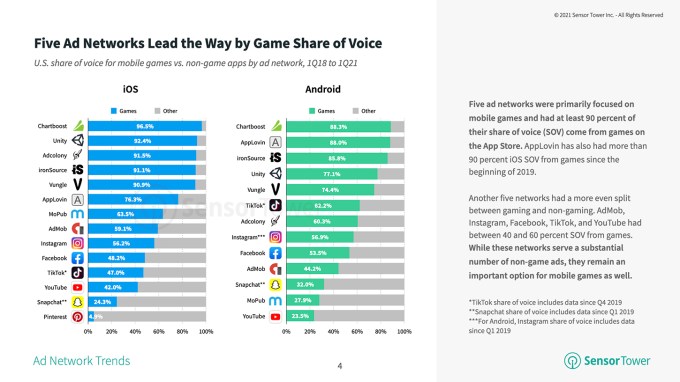
Image Credits: Sensor Tower
Health & Fitness
- Apple is reportedly scaling back HealthHabit, an internal app for Apple employees that allowed them to track fitness goals, talk to clinicians and coaches at AC Wellness (a doctors’ group Apple works with) and manage hypertension. According to Insider, 50 employees had been tasked to work on the project.
- Samsung launched a new product for Galaxy smartphones in partnership with healthcare nonprofit The Commons Project, that allows U.S. users to save a verifiable copy of their vaccination card in the Samsung Pay digital wallet.
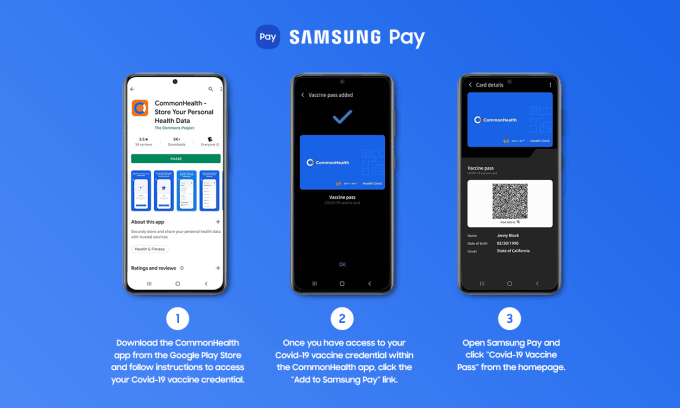
Image Credits: Samsung
Adtech
- Samsung said it’s removing ads shown in its default apps, Samsung Pay, Samsung Weather and Samsung Theme, to address widespread criticism that a flagship phone’s core apps shouldn’t be ruined with ads.
Government & Policy
- China cited 43 apps, including Tencent’s WeChat and an e-reader from Alibaba, for illegally transferring user data. The regulator said the apps had transferred users location data and contact list and harassed them with pop-up windows. The apps have until August 25 to make changes before being punished.
Security & Privacy
- A VICE report reveals a fascinating story about a jailbreaking community member who had served as a double agent by spying for Apple’s security team. Andrey Shumeyko, whose online handles included JVHResearch and YRH04E, would advertise leaked apps, manuals and stolen devices on Twitter and Discord. He would then tell Apple things like which Apple employees were leaking confidential info, which reporters would talk to leakers, who sold stolen iPhone prototypes and more. Shumeyko decided to share his story because he felt Apple took advantage of him and didn’t compensate him for the work.
Funding and M&A
 South Korea’s GS Retail Co. Ltd will buy Delivery Hero’s food delivery app Yogiyo in a deal valued at 800 billion won ($685 million USD). Yogiyo is the second-largest food delivery app in South Korea, with a 25% market share.
South Korea’s GS Retail Co. Ltd will buy Delivery Hero’s food delivery app Yogiyo in a deal valued at 800 billion won ($685 million USD). Yogiyo is the second-largest food delivery app in South Korea, with a 25% market share.
 Gaming platform Roblox acquired a Discord rival, Guilded, which allows users to have text and voice conversations, organize communities around events and calendars and more. Deal terms were not disclosed. Guilded raised $10.2 million in venture funding. Roblox’s stock fell by 7% after the company reported earnings this week, after failing to meet Wall Street expectations.
Gaming platform Roblox acquired a Discord rival, Guilded, which allows users to have text and voice conversations, organize communities around events and calendars and more. Deal terms were not disclosed. Guilded raised $10.2 million in venture funding. Roblox’s stock fell by 7% after the company reported earnings this week, after failing to meet Wall Street expectations.
 Travel app Hopper raised $175 million in a Series G round of funding led by GPI Capital, valuing the business at over $3.5 billion. The company raised a similar amount just last year, but is now benefiting from renewed growth in travel following COVID-19 vaccinations and lifting restrictions.
Travel app Hopper raised $175 million in a Series G round of funding led by GPI Capital, valuing the business at over $3.5 billion. The company raised a similar amount just last year, but is now benefiting from renewed growth in travel following COVID-19 vaccinations and lifting restrictions.
 Indian quiz app maker Zupee raised $30 million in a Series B round of funding led by Silicon Valley-based WestCap Group and Tomales Bay Capital. The round values the company at $500 million, up 5x from last year.
Indian quiz app maker Zupee raised $30 million in a Series B round of funding led by Silicon Valley-based WestCap Group and Tomales Bay Capital. The round values the company at $500 million, up 5x from last year.
 Danggeun Market, the publisher of South Korea’s hyperlocal community app Karrot, raised $162 million in a Series D round of funding led by DST Global. The round values the business at $2.7 billion and will be used to help the company launch its own payments platform, Karrot Pay.
Danggeun Market, the publisher of South Korea’s hyperlocal community app Karrot, raised $162 million in a Series D round of funding led by DST Global. The round values the business at $2.7 billion and will be used to help the company launch its own payments platform, Karrot Pay.
 Bangalore-based fintech app Smallcase raised $40 million in Series C funding round led by Faering Capital and Premji Invest, with participation from existing investors, as well as Amazon. The Robinhood-like app has over 3 million users who are transacting about $2.5 billion per year.
Bangalore-based fintech app Smallcase raised $40 million in Series C funding round led by Faering Capital and Premji Invest, with participation from existing investors, as well as Amazon. The Robinhood-like app has over 3 million users who are transacting about $2.5 billion per year.
 Social listening app Earbuds raised $3 million in Series A funding led by Ecliptic Capital. Founded by NFL star Jason Fox, the app lets anyone share their favorite playlists, livestream music like a DJ or comment on others’ music picks.
Social listening app Earbuds raised $3 million in Series A funding led by Ecliptic Capital. Founded by NFL star Jason Fox, the app lets anyone share their favorite playlists, livestream music like a DJ or comment on others’ music picks.
 U.S. neobank app One raised $40 million in Series B funding led by Progressive Investment Company (the insurance giant’s investment arm), bringing its total raise to date to $66 million. The app offers all-in-one banking services and budgeting tools aimed at middle-income households who manage their finances on a weekly basis.
U.S. neobank app One raised $40 million in Series B funding led by Progressive Investment Company (the insurance giant’s investment arm), bringing its total raise to date to $66 million. The app offers all-in-one banking services and budgeting tools aimed at middle-income households who manage their finances on a weekly basis.
Public Markets
 Indian travel booking app ixigo is looking to raise Rs 1,600 crore in its initial public offering, The Economic Times reported this week.
Indian travel booking app ixigo is looking to raise Rs 1,600 crore in its initial public offering, The Economic Times reported this week.
 Trading app Robinhood disappointed in its first quarterly earnings as a publicly traded company, when it posted a net loss of $502 million, or $2.16 per share, larger than Wall Street forecasts. This overshadowed its beat on revenue ($565 million versus $521.8 million expected) and its more than doubling of MAUs to 21.3 million in Q2. Also of note, the company said dogecoin made up 62% of its crypto revenue in Q2.
Trading app Robinhood disappointed in its first quarterly earnings as a publicly traded company, when it posted a net loss of $502 million, or $2.16 per share, larger than Wall Street forecasts. This overshadowed its beat on revenue ($565 million versus $521.8 million expected) and its more than doubling of MAUs to 21.3 million in Q2. Also of note, the company said dogecoin made up 62% of its crypto revenue in Q2.
Downloads
Polycam (update)

Image Credits: Polycam
3D scanning software maker Polycam launched a new 3D capture tool, Photo Mode, that allows iPhone and iPad users to capture professional-quality 3D models with just an iPhone. While the app’s scanner before had required the use of the lidar sensor built into newer devices like the iPhone 12 Pro and iPad Pro models, the new Photo Mode feature uses just an iPhone’s camera. The resulting 3D assets are ready to use in a variety of applications, including 3D art, gaming, AR/VR and e-commerce. Data export is available in over a dozen file formats, including .obj, .gtlf, .usdz and others. The app is a free download on the App Store, with in-app purchases available.
Jiobit (update)
Jiobit, the tracking dongle acquired by family safety and communication app Life360, this week partnered with emergency response service Noonlight to offer Jiobit Protect, a premium add-on that offers Jiobit users access to an SOS Mode and Alert Button that work with the Jiobit mobile app. SOS Mode can be triggered by a child’s caregiver when they detect — through notifications from the Jiobit app — that a loved one may be in danger. They can then reach Noonlight’s dispatcher who can facilitate a call to 911 and provide the exact location of the person wearing the Jiobit device, as well as share other details, like allergies or special needs, for example.
Tweets
When your app redesign goes wrong…
Prominent App Store critic Kosta Eleftheriou shut down his FlickType iOS app this week after too many frustrations with App Review. He cited rejections that incorrectly argued that his app required more access than it did — something he had successfully appealed and overturned years ago. Attempted follow-ups with Apple were ignored, he said.
Anyone have app ideas?
Tracking startup growth rates
Welcome back to The TechCrunch Exchange, a weekly startups-and-markets newsletter. It’s inspired by what the weekday Exchange column digs into, but free, and made for your weekend reading. Want it in your inbox every Saturday? Sign up here.
Hey friends! This week was more than hectic, so we have a lot of ground to cover. Below are more notes on the Brazilian IPO market, more coverage of the Chicago startup scene and a host of numbers from startups concerning their recent growth results. So, if you like early-stage or later-stage startups, international startups or domestic startups, we have just what you want!
Another week, another Twitter conversation about funding rounds. To catch you up, this week saw more folks complaining about the media covering funding rounds over other examples of startup activity. My contention for years has been that we, the scribbling classes, cover funding rounds because they are the rare moment that startups are willing to actually share results of their operations.
That VCs will occasionally complain about this is particularly rich, given that investors would hardly be willing to invest in a company based on a short call with a founder about how they came up with an idea. And yet they tell founders to not tell the media anything at all. Alas.
Regardless, all this shook out to me saying, “Hey startups, send in your data!” And some folks did! Others sent in notes about stuff that they had announced before, but that we’d missed.
So here’s a digest of startup growth from a number of stages, markets and the like:
CopyAI: The company recently crossed the $2 million ARR threshold. CopyAI is busy building its business in public, which we love, sharing metrics as it goes. And it has raised external capital and grown rapidly while doing so, providing a proof point that you can share information and not have your startup instantly burst into flames.
I asked CEO Paul Yacoubian if growth has kept up with his expectations, and he said that it has. Our next question: How long until the company can double in size yet again? CopyAI reached $1 million ARR earlier this year.
TextNow: Now over the $100 million ARR mark. The company, essentially bootstrapped after raising less than $2 million during its life, also recently hired a CFO. You know what that means — an IPO is coming. Frankly TextNow is not a company I know well, but thanks to it sharing information, I now want to learn more about it. See!
Kalendar AI: This company helps folks book sales meetings using AI, it appears. And the model is showing some traction, according to founder and CEO Ravi Vadrevu. He shared a host of metrics with The Exchange, including its bank balance and growth charts. (Hell yeah, data!) The company is generating ARR in the six figures and raised $700,000 in a recent round.
And per its charts, subscriber signups appear to be accelerating. Per a different dataset shared, August is going to be the company’s busiest month yet when it comes to meetings booked, the key non-GAAP metric for its business. That figure is growing at 30% monthly, the startup said.
In Vadrevu’s own phrasing, Kalendar AI wants to “democratize growth for companies like how AWS democratized innovation with virtualization.”
Balto: Balto is a St. Louis-based startup that has raised just over $50 million. The company reached out with some neat data from its recent round, a $37.5 million Series B. Per the company’s COO Chris Kontes, “Jump Capital, OCA Ventures and Sandalphon” took part in the round. Which matters if you read our recent dig into the Chicago market.
Regardless, Balto said that it grew its customer base by 84% and its revenue by 200% since it raised its Series A in Q3 2020. I asked if the ? between the company’s customer and revenue growth was driven by net dollar retention (NDR) or larger customers. Per Kontes, “the answer is a bit of both” with a bias toward NDR. He didn’t share an absolute number, but did say that Balto’s “NDR is north of 150%.” Hot dang.
The company, by the by, built tech to help support agents know what to say during calls. Which, it appears, is big business.
HostiFi: Headquartered near Detroit, HostiFi helps customers “remotely monitor and manage UniFi Network devices.” I do not know what that means, sadly, and don’t have the minutes right now to dig in more deeply.
But in better news, HostiFi’s founder Reilly Chase dropped a grip of metrics into our inbox. His company will reach $1 million in ARR in the “next few weeks,” and wants to hit $10 million ARR in “the next 3 years,” which we dig. The company raised $100,000 from what was previously known as Earnest Capital, a group that we’ve covered. HostiFi has 1,700 customers, it says, and a fully remote team of six.
Fun, yeah? Private companies being more open with their financial performance is good for the world as the activity has a way of making the opaque startup world just a bit more limpid.
Brazil
Our dive into the Brazilian startup market and its impending IPOs was good fun to write. But as we went to press, Brazil’s B3 stock exchange got back to our questions with answers. They just missed our timeline, but we’d be remiss to not share some of their notes here.
Regarding the present state of the Brazilian technology IPO market, B3’s Rafaela Vesterman Araujo wrote the following (minor edits for clarity):
We are passing through a period of records in the Brazilian Capital Markets. Through the first half of August 2021 we had 44 IPOs (for comparison purposes, in all of 2020 we had 28) and around 30% of these IPOs were technology companies, which is very interesting, considering that before 2020, the technology sector was underrepresented at B3.
This is precisely the trend that we were trying to highlight, and note, so it’s nice to see the data back us up.
Next up, how big does a company have to be to list on B3? Here’s Vesterman Araujo (minor edits for clarity):
Around 70% of 2020 and 1H21 technology IPOs raised between [$110 million] and [$367 million]. In addition, 70% of these companies had a net income up to [$55 million]. In some of the cases, even with a lower net revenue compared to other sectors, we have noticed that many of them have been raising a greater amount of capital, probably reflecting the growth expectations.
Hello, growth premium! That’s great news for local Brazilian startups hoping to get public in their home market. With Nubank and Nuvemshop growing huge while private, where the country’s companies will go public is no small matter.
Chicago
We dug into the Chicago boom this week, tracking the Windy City’s huge venture capital results from the past few quarters and asking locals precisely what was driving the wave of funding and startup activity. As we got that into WordPress, another set of answers came in that we want you to read.
Techstars’ Neal Sáles-Griffin, managing director of its Chicago operations, had this to say about why Chicagoland startups have excelled in attracting capital since late 2020:
It’s a flight to quality. For too long, there’s been a concentration of capital in one hub and VCs following the decentralization of innovation after the COVID [lockdowns]. The pandemic broke old habits and brought investors to mature markets like Chicago. [ … ] For years, Chicago has grown as a national, top-tier destination for startups. The national VC community is finally catching up, exploring our amazing community of founders who are scaling fast in the Midwest.
I went to school in Chicago, so am pretty aware of the density of schools in the area. I was curious if that fact was beneficial to local startups. Per Sáles-Griffin, the answer is a hard yes:
Absolutely, we’re home to two of the top five MBA programs (UChicago, Northwestern), home to a top-five engineering college (UIUC) and [to] one of the most diverse engineering colleges in the country (UIC). But we’re also home to one of the largest city college districts in the region (City Colleges) and historically Black institutions like Chicago State — both home to several engineering and IT programs, training the next generation of talent.
Where should we look for the next generation of startups from Chicago? The Techstars denizen listed healthcare and life sciences as a key market, as well as food tech and companies building in the larger transit space.
So many other things!
Sadly, we are way over our word count for this newsletter, so we have to stop. But lots of other things out there are worth your attention. Like Indianapolis-based Lessonly being acquired by Seismic. Lessonly had raised just under $30 million while operating on its own, helmed by the dynamo-like Max Yoder. And Aspiration Partners — backed by a number of well-known actors — is going public via a SPAC. The deal will provide hundreds of millions in fresh capital to the company.
More next week.
— Alex
China roundup: Beijing takes stake in ByteDance, Amazon continues China crackdown
Hello and welcome back to TechCrunch’s China roundup, a digest of recent events shaping the Chinese tech landscape and what they mean to people in the rest of the world.
This week, investors’ concerns mount as news came that the Chinese government has taken a stake ByteDance, TikTok’s parent and one of the world’s largest private internet firms. Meanwhile, Amazon’s crackdown on Chinese sellers continues and is forcing many traders in southern China out of business, and the government passed a sweeping data protection law that will take effect in November.
A state stake
The Chinese government’s grand plan to assert more control over the country’s internet behemoths continues. This week, The Information reported that a domestic entity of ByteDance sold a 1% stake to a government affiliate in April. The deal was also recorded on Tianyancha, a database of publicly available corporate information, as well as the official enterprise registration index.
The move didn’t come abruptly. Beijing was mulling over small shares in private tech firms as early as 2017. The Wall Street Journal reported at the time that internet regulators discussed taking 1% stakes in companies including WeChat operator Tencent, Twitter-like Weibo and YouTube-like Youku.
In April 2020, WangTouTongDa, a subsidiary of China Internet Investment Fund, which is in turn controlled by China’s top internet watchdog, acquired a 1% stake in Weibo for 10 million yuan, according to Weibo’s filing to the U.S. securities regulator. Weibo did not mention WangTouTongDa’s relationship with the state in its filing.
Similarly, ByteDance sold a 1% stake to three entities set up by top regulatory bodies: China Internet Investment Fund; China Media Group, controlled by the Communist Party’s propaganda department; and the Beijing municipal government’s investment arm.
In response to Beijing’s move on ByteDance, Republican senator Marco Rubio urged President Joe Biden this week to block TikTok in the U.S.
Exactly how much power Beijing gains over ByteDance from taking the small stake remains fuzzy, but Weibo’s disclosure to investors offers some clues.
It’s critical to note that the government holds stakes in the domestic operating entity of both Weibo and ByteDance. Internet companies in China often set up offshore entities that are entitled to the financial benefits of their mainland Chinese operations through contractual agreements. The framework is called a variable interest entity or VIE. While the structure allows Chinese firms to seek overseas funding due to China’s restrictions on foreign investments, it has come under increasing scrutiny by Beijing.
Weibo said in the filing that WangTouTongda, its state-owned investor, will be able to appoint a director to the three-member board of its Chinese entity and veto certain matters related to content and future financings.
ByteDance likely has a similar arrangement with its state investor. The government did not obtain a stake in TikTok, which is a subsidiary of a separate offshore entity incorporated in the Cayman Islands, The Information pointed out. This should provide some reassurance to U.S. regulators, though concerns about Beijing’s sway in Chinese companies abroad probably won’t go away.
Indeed, the Biden administration in June replaced the Trump-era orders to ban ByteDance and WeChat with a more measured policy requiring the Commerce Department to review apps with ties to “jurisdiction of foreign adversaries” that may pose national security risks.
TikTok has been fighting accusations that it hands over user data to Beijing. ByteDance is the fourth-largest lobbying spender in the U.S. so far this year, just after Amazon, Facebook and Alphabet. Beijing’s investment is going to cost it more campaign efforts.
Beleaguered Amazon sellers
In May, I reported that Amazon shuttered some of its largest sellers from China over violations of platform rules, including using fake reviews and incentives to solicit positive reviews from customers. The crackdown drove China’s online exporters into a panic, and as it turned out, it wasn’t a one-off ambush from Amazon but a prolonged war. While the exact number of Chinese stores affected is not disclosed, industry observers such as Marketplace Pulse said “hundreds of” top Chinese sellers had been suspended as of early July.
Punished accounts are suspended, with their goods withheld and deposits frozen by Amazon. Companies in Shenzhen, home to the majority of the world’s Amazon sellers, laid off thousands of staff in recent months. The owner of a sizable seller in Shenzhen recently died by suicide due to the debacle, according to an acquaintance of the owner.
To sellers that have survived the crackdown, the attack by Amazon “would have happened sooner or later.” Most of the exporters I talked to came to the same conclusion: The Seattle-based titan now wants quality and design over generic products that compete solely on price and manipulation of ranking.
The Chinese government has taken note of the incidents. An official from the Ministry of Commerce compared the wave of store closures as Chinese exporters being “fish out of water” during a press conference in July.
“Due to differences in laws, culture and business practices around the world, [Chinese] companies are facing risks and challenges as they go overseas,” said Li Xingqian, director of foreign trade at the Commerce Ministry.
“We will help companies improve their risk control and comply with international trade standards.” Meanwhile, the official called for “the platform/platforms to cherish the important contribution from various companies and fully respect different trade entities.”
Data protection
And finally, China passed a sweeping data protection law this week that will strictly limit how tech companies collect user information, but the rules won’t likely have an impact on state surveillance. The regulation, which was proposed last year, will take effect on November 1. Read more about the rules here:

